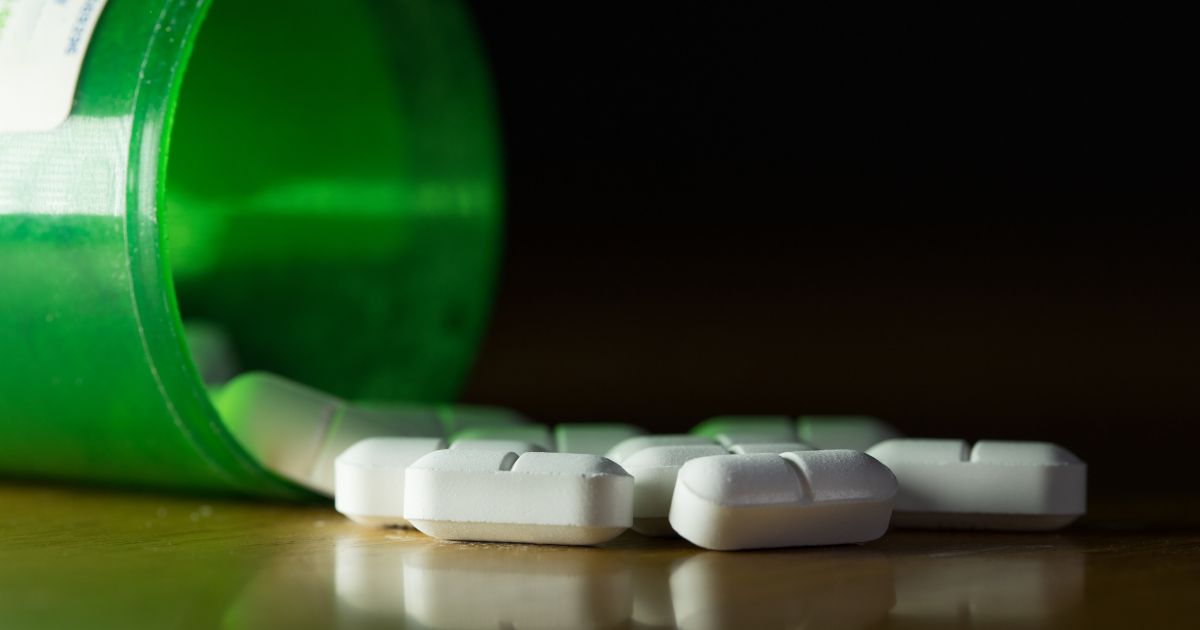Suboxone is a prescription drug used in treating opioid addiction. While effective, there are some things to be aware of, such as the danger of combining it with other substances. This is a concern because many opioid-addicted people use other substances as well (known as polysubstance abuse). Many wonder is it safe to drink alcohol while on suboxone? The answer may surprise you.
What Is Suboxone?
Suboxone is a medication designed to block the effects of opiates. Used primarily to treat opioid addiction, it’s a 4:1 combination of two drugs: buprenorphine and naloxone.
Here’s a quick explanation of those two drugs:
- Buprenorphine: Buprenorphine has a “ceiling effect,” meaning higher doses do not lead to greater euphoria. This makes it a safer alternative to earlier opioid addiction drugs like methadone.
- Naloxone: Commonly known under the brand name Narcan, naloxone blocks the euphoric effects of opioids. It’s included in suboxone because it is designed to prevent abuse. It does this by inducing withdrawal symptoms when injected rather than taken sublingually, as prescribed. However, it does not protect against dangerous interactions, such as between suboxone and alcohol.
This combination is what makes suboxone an ideal drug for use in medication-assisted treatment of opioid addiction. It’s grown rapidly in usage – according to the Department of Health, the number of people prescribed suboxone increased from 3% to 16% between 2011 and 2020.
Medication-assisted treatment, or MAT for short, is a method of treatment that uses medications to manage cravings, minimize withdrawal symptoms, and stabilize patients.
Suboxone does all of these things very well – according to studies, MAT with suboxone can reduce opioid deaths by up to 50%. However, it does still carry the potential for addiction and abuse. Not only that, but it’s a very bad idea to mix suboxone with other substances – mixing suboxone and alcohol is a particularly bad combination.
How Does Suboxone Work?
Suboxone works by leveraging the unique strengths of its component drugs. The buprenorphine prevents cravings by acting as a partial opioid agonist—something that activates the opioid receptors of the brain (yes, your brain really has those), providing enough stimulation that a person no longer wants the real thing. The long half-life means the drug stays in the body a long time, providing stable levels of stimulation. The ceiling effect prevents abuse.
Meanwhile, the naloxone is there to further prevent abuse of the medication, inducing withdrawals if it is injected.
Suboxone Abuse
While suboxone was designed with a number of safeguards, it can still be abused.
Ways this can happen include:
- Combining Suboxone with Other Substances: Users may mix suboxone and alcohol or other drugs, such as benzodiazepines, to intensify the sedative effects. This combination is particularly dangerous and increases the risk of overdose, respiratory depression, and death.
- Taking Higher Doses: Some individuals abuse Suboxone by taking larger doses than prescribed to increase its effects. Although buprenorphine has a ceiling effect (where increasing the dose doesn’t enhance the opioid effects), people may still misuse it to feel a mild opioid high.
- Selling or Trading Suboxone: Suboxone is sometimes diverted for illicit use, where people sell or trade their prescribed doses to others seeking opioids. Some opioid users may misuse Suboxone when they cannot access other stronger opioids like heroin or fentanyl.
Suboxone abuse, though less common than with other MAT drugs, is still possible. Misusing Suboxone by taking it in ways other than prescribed or combining it with alcohol can lead to dangerous outcomes, including overdose and dependence. Proper use, supervision, and education are essential to minimize the risk of suboxone abuse.
Get confidential help from our addiction treatment specialists in Orange County. Call to join our rehab program today!
Call 866-881-1184Is It Safe to Drink Alcohol While on Suboxone?
Mixing substances like suboxone and alcohol can lead to a number of consequences.
For instance, suboxone can cause nausea, drowsiness, insomnia, and low blood pressure. These are all also side effects of alcohol, especially when taken in excess. The effects of suboxone and alcohol thus can aggravate each other when taken together.
In addition, both drugs depress breathing. While less common with suboxone, combining the two can lead to severely slowed breathing. Both substances are also processed by the liver, and both have sedative effects, which can impair coordination and judgment. A coma can even occur in severe cases. These are all additional dangers to be aware of.
In a nutshell, mixing alcohol with Suboxone significantly increases the risk of side effects. Some of these will reduce your quality of life; others are actually life-threatening.
The Dangers of Long-Term Alcohol Abuse
It should come as no surprise that chronic alcohol abuse can do profound damage to a person’s physical and mental health.
Physical consequences can include liver failure, pancreatic or liver cancer, heart disease, and stomach ulcers.
The damage long-term alcohol abuse can do to the mind is no less severe. Chronic alcohol use can lead to memory loss, difficulty thinking clearly, and a form of alcohol-related dementia known as Wernicke-Korsakoff Syndrome.
Looking for quality substance abuse treatment that’s also affordable? South Coast accepts most major insurance providers. Get a free insurance benefits check now.
Check Your CoveragePolysubstance Abuse Help
Polysubstance abuse refers to the use of multiple substances at once, whether legal or illegal. It complicates treatment because substances can share effects, and those effects can also interact with those of the other substance, creating new problems. This can make it hard to determine what the real issue is and can also exacerbate a person’s condition overall.
Mixing suboxone and alcohol is an example of polysubstance abuse. Both substances depress the central nervous system (CNS), and their combination can lead to severe complications due to their overlapping effects.
These possible complications include:
- Severe Breathing Problems: Suboxone and alcohol can both depress the respiratory system, which can lead to depressed breathing or even respiratory arrest (stopped breathing). This can, in turn, result in a lack of oxygen to the brain, known as hypoxia, which can lead to permanent brain damage or even death.
- Increased Risk of Overdose: The sedative effects of alcohol, combined with those of too much suboxone, can open the door to losing consciousness or even a coma. A lethal overdose could even occur.
- Grossly Impaired Motor Skills: Suboxone and alcohol can both cause drowsiness, slow reaction times and impair motor skills. Taken together, this could result in severely impaired judgment, raising the risk of falls or car accidents.
- Cardiovascular Complications: Alcohol consumption leads to lower blood pressure, and suboxone has a similar effect, particularly at higher doses. Combining the two can cause severe hypotension, the effects of which include dizziness, fainting, or shock.
There are also mental health risks. Those dealing with opioid addiction recovery may already be struggling with issues like depression or anxiety. Given alcohol abuse is already known to be connected to these things, combining suboxone and alcohol is probably not a good idea.
Substance Abuse Treatment Programs
Substance abuse treatment programs are designed to help people who are struggling with addiction to drugs, alcohol, or both. These programs offer support, guidance, and medical care to help individuals stop using harmful substances and get their lives back on track.
A good program will include MAT for opioid abuse. MAT is often combined with counseling and therapy to address both the physical and mental aspects of addiction. Medication management is also necessary to ensure medications like suboxone are used safely and effectively.
If you are struggling with polysubstance abuse involving suboxone and alcohol, you should look for the following levels of care:
Detox
Detox, short for detoxification, is the process of removing harmful substances, like drugs or alcohol, from the body. It’s usually the first step in recovering from addiction. During detox, the body goes through withdrawal as it adjusts to life without the substance it’s been dependent on. This can be difficult, but it’s a crucial part of starting the recovery process.
To ensure things go smoothly, it’s a good idea to make sure your treatment for suboxone and alcohol abuse has a medical detox program.
Inpatient
Inpatient treatment requires full-time attendance at a treatment facility for a period of time, typically between 30 to 90 days. Around-the-clock support is provided to ensure patients can get through those crucial early stages of recovery when withdrawal symptoms are at their most acute.
Outpatient
Outpatient treatment programs offer more flexibility. Individuals can live at home and attend regular therapy and counseling sessions one to three times a week. This allows people to attend to their daily responsibilities at work and with their families. It’s a good option for those whose suboxone and alcohol addictions are less severe or who have already completed inpatient treatment.
Aftercare
Aftercare refers to ongoing support after someone goes through rehab. It’s designed to help individuals stay sober and avoid relapse by providing resources like therapy, support groups, or follow-up appointments.
Aftercare may include regular check-ins with a counselor, attending meetings like Alcoholics Anonymous (AA) or Narcotics Anonymous (NA), or even living in a sober living home. This continued support helps people adjust back to everyday life, manage triggers, and build a strong foundation for long-term recovery. All of these things can help mitigate any danger of mixing suboxone and alcohol.
Using Insurance for Rehab
South Coast Behavioral Health is an in-network provider for a variety of insurance carriers, including Cigna, Aetna, and Anthem. If you are interested in checking if you have insurance coverage, we are happy to help you. You can also call us at 866-881-1184 or contact us here if you have any questions.









